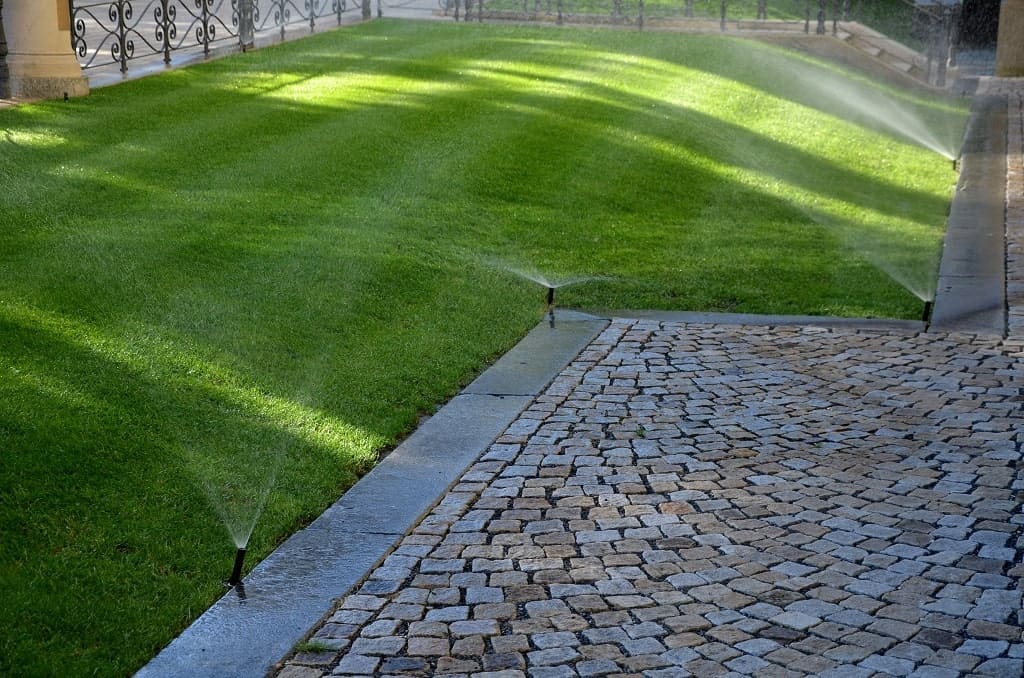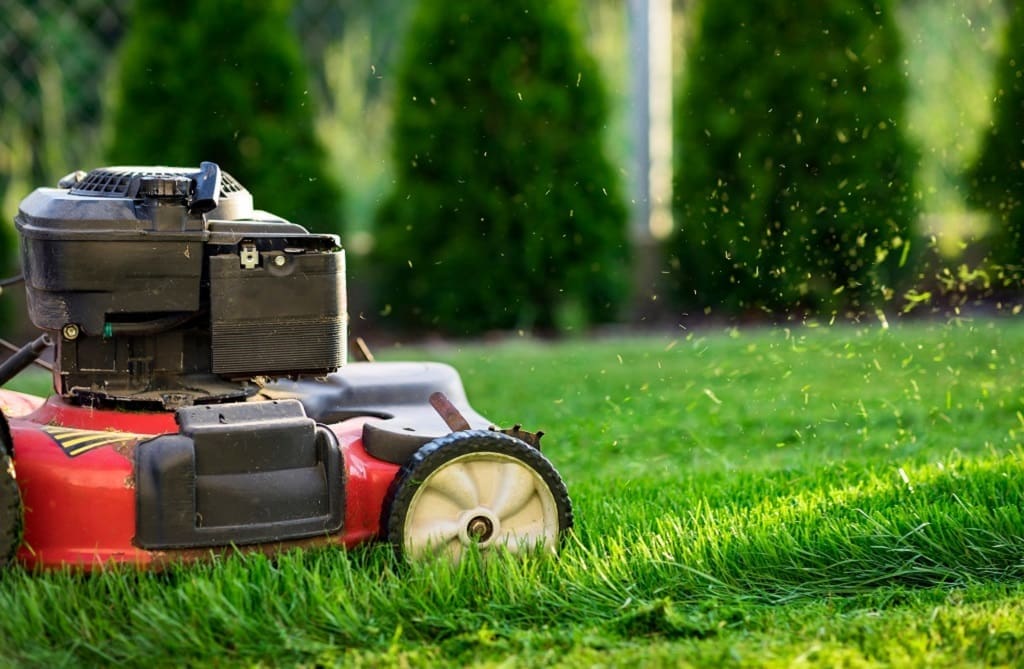You may be dreaming of a quintessential dark green lawn, and yet when you look out at your grass, it’s a lighter green or even yellow. So you’re likely wondering how to make grass green.
We want to help you achieve the dark green lawn of your dreams, and we know what makes grass green in areas like Green Bay, Milwaukee, or Appleton. So read on to find out how to get dark green grass and what you need to do to maintain it.
Choose the Right Lawn Seed
If you’re looking out at your lawn and seeing light greens and yellows but wondering what makes grass green, you may not even have the proper variety of grass to grow a dark green lawn. So the first thing you need to do is select the right lawn seed for your lawn.
Not all grasses will produce the dark green lawn that you’re looking for, and different results are depending on the region of the country you live in. There are a wide variety of different grasses, and they vary quite significantly in color. If you’re in the Wisconsin area, you of course should be choosing the best grasses for Wisconsin lawns.
Make Sure Your Yard Gets Enough Sun
Once you’ve selected the right type of grass, you need to make sure your lawn is receiving enough sun. Like many other plants, grass produces a pigment called chlorophyll, and that’s what makes grass green.
Chlorophyll absorbs blue and red light, reflecting the green light to the human eye. So if your lawn isn’t getting enough of that light, your grass may not be producing the green color you’re looking for. If you have huge trees or buildings shading your lawn, you may not be able to do much, but keeping trees trimmed can make it easier for sunlight to reach the ground.
Add Iron Supplements
Did you know you can supplement your lawn with iron to help with the darker green color? In fact, adding an iron supplement can be one of the most effective ways how to make grass green. This is especially true if you’ve been watering your grass, applying fertilizer, and making sure your lawn gets ample sun, but still not seeing the results you’re looking for.
Iron can work for all different types of grass but is especially effective if you’re using Fescue or Bluegrass. It’s worth knowing that iron will help just about any plant get more green, including roses, citrus trees, and even tomatoes.
In the heat of the summer, when your neighbor’s lawns are yellow and crispy, you’ll be happy you threw down some iron as your grass will likely be nice and green!
How to Apply Iron to Your Lawn
So how exactly do you apply iron to your lawn? It’s pretty simple to do so. When temperatures start to rise above the 60s in the Spring, mix some granular iron supplement with a slow-release fertilizer and apply it with a broadcast spreader.
You can continue to add iron to your fertilizer applications throughout the rest of the year so you can keep your lawn that darker shade of green you’re looking for. However, there are some things to watch out for when using the iron.
Make sure you carefully follow the iron dosing instructions so you avoid overdoing your lawn with iron, which can cause damage or even turn your grass gray. Keep in mind, however, that iron overdosing won’t typically kill your grass.
Another issue with iron supplements is that you need to be extra careful to make sure that it doesn’t touch concrete. When synthetic iron supplements come into contact with concrete, they can stain it an unpleasant shade of orange, which is something you want to avoid.
Another alternative is using organic iron fertilizers such as Greensand or Milorganite, which absorb easily into the lawn and supply it with additional essential nutrients.
Water Wisely

For healthy, dark green grass that will stay that rich color for a long period of time, you’ll also need to water regularly and intelligently. Not only does the soil need watering, but the grass itself needs water. The blades of grass themselves have pores called stomata, and when the grass is adequately watered, these act to remove waste and excess water from the grass. This process requires adequate water to function.
Your lawn should be watered at the first sign of stress from drought, meaning the grass is starting to wilt a bit or footprints can be seen on the lawn. As a general rule, make sure to water about 1 inch of water across the lawn every week, which should be enough water to soak the top 6 inches of soil or so. Depending on the type of grass and type of soil you have, the frequency you’ll need to water your lawn will vary.
In fact, understanding the type of soil you have is incredibly important to know, since it will impact both the frequency and duration of watering. Let’s take a look at some different kinds of soil and how it impacts the required watering frequency for how to make grass greener.
If you need help with watering your lawn, Earth Development also provides improving and installing of a new drainage systems within our landscape renovation services.
Watering Grass in Sandy Soil
While sandy soil is very quick to absorb water, it will also lose water almost just as rapidly. So if you’re dealing with sandy soil, you may need to water more frequently than you might think. It’s also recommended to work on improving your soil quality over time by top-dressing your soil every other year with compost.
Watering Grass in Yards with Loam Soil
Good loam soil is the ideal type of soil for lawns. Loamy soil has a good rate of absorption, but it will also retain water for a longer period of time. If you have loam soil, you won’t need to water your lawn as often to get a nice, deep green grass.
Watering Lawns with Clay Soil
Clay soil can be tricky for certain varieties of grass in general. But if you have a lawn that seems to be working with clay soil, you’ll notice you don’t need to water your lawn nearly as often. While clay soil takes a much longer time to absorb water, it does retain water for an exceptionally long time.
Use the Right Fertilizer
Choosing the right fertilizer is another key how to making grass green. You’re going to do a little research to figure out the best kind of fertilizer for your region, soil type, and grass type. If you want to dial in your precise needs, doing a soil test can give you a great idea of what you’ll need in a fertilizer.
As a general rule, choose a fertilizer with a relatively high percentage of slow-release nitrogen in it, as well as a low percentage of phosphorus. If you’re completely unsure of where to start or you’re worried about using the wrong fertilizer, we offer excellent lawn fertilizer services to help you figure out what you need and implement the fertilization effectively.
Another choice you’ll need to make is whether or not to use organic fertilizer. While it doesn’t absorb as quickly, it may be preferable to synthetic fertilizer if you have kids and/or dogs. If you opt for organic fertilizer, make sure it’s nitrogen-rich as well.
Mow Properly

If you’re saying to yourself “I do all these things but I still don’t know why my lawn is not green,” proper mowing is yet another essential component of keeping a lawn dark rich green. Mowing puts a strain on the overall health of your lawn, and you need to make sure you’re doing it properly to minimize damage.
The most common mistake made when mowing is using dull mower blades, which can put excessive strain on your lawn. It’s more or less like shaving with a dull razor. When you use a dull blade, you end up tearing the grass blades rather than getting a clean cut.
The length at which you mow is also a major factor, as mowing too short can make your lawn appear more yellow. The greenest part of the grass blade is at the top, where it gets the most sun and can produce the highest amounts of chlorophyll. So if you mow your lawn too short, the most colorful parts of your lawn are getting shorn off.
Most grass, in general, should not have more than approximately one-third of its overall height cut off at any particular time. When you mow, make sure you leave the shorn blades on the lawn to return the nitrogen to the soil.
Choose Professional Lawn Maintenance Services
Keeping a lawn a nice dark green requires regular maintenance and the right balance of various factors. You likely don’t have the time required to keep your lawn a nice, rich green, and that’s where our professional lawn maintenance services come in.
Earth Development knows how to make the grass greener and how to get dark green grass in the first place. Contact us today for a free estimate. We’d love to help turn your favorite lawn into one of the most beautiful areas of your landscape.
